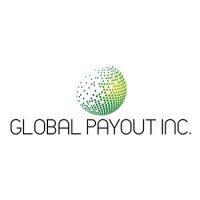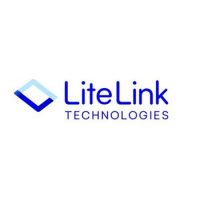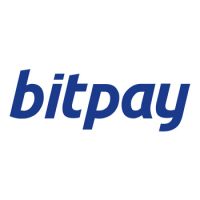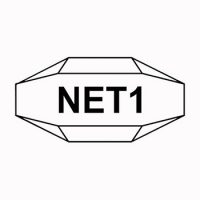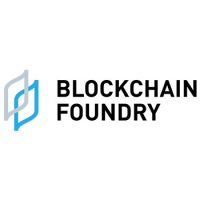Blockchain
Kiba Inu: World’s Favorite Crypto Meme Coin
Cape Coral, Florida–(Newsfile Corp. – December 1, 2021) – Kiba Inu wants to revolutionize the crypto space by providing a safe haven for investors and new coin startups alike. Kiba Inu not only wants to present a safe floor for investors but has also launched its Kiba Bridge that is unifying the investors in Ethereum and Binance Smart Chain (BSC) space alike.
Figure 1: KIBA INU: WORLD’S FAVORITE CRYPTO MEME COIN
WHAT IS $KIBA?
Kiba Inu, $KIBA is the native token for the Kiba Inu ecosystem. The token is used to carry out current and upcoming utilities in the same ecosystem. Kiba Inu was recently launched on the Binance Smart Chain, and compared to an already popular token named Floki, Kiba Inu is also building a bridge between Ethereum and Binance Smart Chain that will allow the holders on either side to bridge across to the other without any difficulty. Kiba Inu is not to be confused with shitcoins present on the Binance Smart Chain. Kiba Inu is a utility token featuring Kiba Swap: the in house dex, Kiba Bridge: a network bridge unifying the blockchains, Kiba Gains: Portfolio tracker, Kiba Charts: an analytical tool to study transactions and charts, Kiba Fomo: Token Tracker and last but not the least, Kiba HP checker: a Honey Pot identifying tool.
Along with multi-chain support, Kiba Inu has many utilities to offer:
KIBA SWAP:
Kiba Swap is the in-house decentralized exchange built by the Kiba Inu team with the ability to provide multichain compatibility. Currently, their decentralized exchange offers support for Binance Smart Chain Network and Ethereum network, where Kiba is currently available.
KIBA BRIDGE:
Kiba bridge provides interoperability between the Binance Smart Chain network and Ethereum Network that further enables the $KIBA holders to switch in between chains with ease. The bridge was built by the Kiba Inu team in association with Moontography, which is a group of pioneer developers that specializes in such feats.
KIBA HONEY POT CHECKER
A honeypot is a smart contract that pretends to leak its funds to an arbitrary user (victim), provided that the user sends additional funds to it. However, the funds provided by the user will be trapped and at most, the honeypot creator (attacker) will be able to retrieve them.
The Kiba Honey Pot Checker runs test buy and sell from any smart contract that needs to be verified. The test is run via code that alerts the user if the smart contract is indeed a honey pot or a similar scam or if the smart contract is safe to trade with. It also shows the buy and sell tax incorporated in the given smart contract. Kiba Honey Pot checker comes with multi-chain support for both Binance Smart Chain and Ethereum Blockchain.
KIBA GAINS:
Kiba gains is a portfolio tracker that allows the users to conveniently track their gains with the use of a custom-built dashboard that also shows the current balance, reflections earned, and more. The dapp is very user-friendly and does its job efficiently.
KIBA CHARTS:
Kiba Charts is another utility offered in the Kiba Inu ecosystem, it is a utility that allows a user to view charts and transaction data related to any token currently available for import on the Uniswap. This allows users to stay on the Kiba Swap instead of switching to other platforms like Dextools and Bogged Finance.
KIBA FOMO:
Kiba fomo acts as a token tracker that provides information regarding all the recently listed tokens on the Polygon chain, Binance Smart chain, Ethereum Blockchain, and more. Kiba Fomo is powered by tokenfomo.io.
KIBA TOOLS:
$KIBA holders will have exclusive access to the Kiba tools suite, which will offer launch pad like services directly within Kiba Swap, offering features like minting new tokens, liquidity locks, token locks, Initial Coin Offerings before launch, the functionality for the Kiba tools suite will be implemented through Unicrypt.
Marketing and Tokenomics:
With Jake Paul as their brand ambassador, the project has already seen an all-time high of $100 million in market capitalization in a span of 30 days. The project is relying extensively on influencer marketing and bringing new partnerships very frequently, the most recent ones being a partnership with superbid.io. SuperBid.io is an innovative social-auction app that connects influencers with their fans, as well as bringing Ryan Garcia onboard Kiba Inu. The project has seen a huge success in such a short period and has proven its mantle in the Binance Smart Chain space.
Jake Paul Tweet here – https://twitter.com/jakepaul/status/1461910545062240261?s=21
The smart contract for $KIBA incorporates a buy/sell tax of a total of 10 percent that further breaks down into 1 percent for reflections to provide passive income to the holders and 9 percent for their extensive marketing. There is also an exception in Sell tax. If the sell is transacted in the first 24 hours of the purchase a tax of 25 percent will be applied to punish the paper hands as well as furthering a buy pressure.
Kiba Inu as an ecosystem has a lot to offer ranging from the Kiba Swap to their Kiba Tools Suite. They also plan to release an NFT marketplace along with Gamefi integrations and an Anime ecosystem for all the otakus and anime savvies out there. They will be listed on Bitmart on 14th December and there is also a partnership with Tory Lanez that’s imminent.
Links:
Website: https://kibainu.space/
Telegram: https://t.me/KibaInuGlobal
Twitter: http://twitter.com/kibainukiba
CMC: https://coinmarketcap.com/currencies/kiba-inu
Media Contact:
Dave Ruiz
Telegram: https://telegram.me/cryptokidfinance
[email protected]
Blockchain
ONFA Fintech USA Partners with Metti Capital Funding to Accelerate Blockchain Banking and DeFi Expansion

ONFA Fintech USA – feat image
Blockchain
Blocks & Headlines: Today in Blockchain – May 16, 2025

A Pivotal Moment for Blockchain’s Many Frontiers
Today’s briefing arrives at a crossroads in blockchain’s evolution. From AI-driven Layer-1 grant programs to gamified resets in Web3, from supply-chain trust revolutions to exchange-driven token incentives, and high-stakes regulatory leadership shifts, the industry is charting new territory on multiple fronts. As builders, investors, and policymakers navigate this shifting terrain, five stories stand out for their potential to reshape blockchain’s trajectory:
-
Lightchain Protocol AI unveils a $150,000 developer grant program to onboard top builders in AI × blockchain.
-
Blockchain gaming experiences its lowest engagement of 2025, signaling a sector reset toward sustainability.
-
Norwegian Seafood Council research highlights blockchain’s trust-building power in global supply chains.
-
MEXC Exchange announces the Einstein (EIN) listing on July 20, 2025, buoyed by a $50 million rewards event.
-
Summer Mersinger, a US CFTC commissioner, is tapped as CEO of the Blockchain Association, marking a pivotal regulatory turn.
In this op-ed–style briefing, we’ll unpack each development, explore its implications for blockchain, cryptocurrency, Web3, DeFi, and NFTs, and assess how these narratives intersect to define today’s momentum.
1. Lightchain Protocol AI’s $150K Grant: Catalyzing Decentralized Intelligence
What happened: On May 15, 2025, Lightchain Protocol AI—a Layer-1 blockchain optimized for AI workloads—launched its Developer Grant & Ecosystem Incentive Program, pledging up to $150,000 in total funding to on-board teams building dApps, explorers, wallets, analytics dashboards, DeFi protocols, NFT platforms, and AI-powered modules on its network. Grants are milestone-based (up to $5,000 per milestone), accompanied by technical support, co-marketing, and ecosystem visibility. Source: Bitcoin News
Why it matters: Lightchain’s move underscores the growing fusion of AI and blockchain. By allocating resources to builders at the intersection of these technologies, the protocol signals that the next wave of innovation will hinge on intelligent smart contracts, federated learning coordination, and on-chain decision-making. For developers, this grant lowers barriers to entry and emphasizes sustainable, value-driven growth over token speculation.
> “We’re seeking impactful projects that align with Lightchain AI’s goal of bridging AI and blockchain—everything from AI prediction markets to compute marketplaces.” > — Lightchain Protocol AI Core Team
Implications:
-
DeFi & NFTs: Expect AI-augmented lending protocols and NFT platforms with dynamic metadata driven by on-chain models.
-
Ecosystem Growth: Lightchain’s aggressive grant strategy may spur competitors (e.g., Ethereum layer-2s) to bolster their own builder incentives.
-
Governance & Sustainability: The milestone-based approach aligns funding with tangible progress, a model DeFi DAOs may increasingly adopt for resource allocation.
Source: Bitcoin News
2. Blockchain Gaming’s 2025 Low: A “Reset” Toward Quality
What happened: According to Crypto.news, blockchain gaming saw daily active wallets dip to 4.8 million in April 2025—a 10% month-over-month decline and the lowest point of the year for Web3 gaming. Share of the DApp ecosystem for gaming fell to 21%, now tied with DeFi, while AI projects surged to 16% of on-chain activity. Funding also plunged nearly 70% from March to $21 million in April, though Arbitrum Gaming Ventures deployed $10 million from its $200 million fund to support titles like Wildcard, XAI Network, and Proof of Play. Source: Crypto.news
> “Capital is harder to secure, but that’s not necessarily bad. Weak projects are falling away, and funds are flowing into builders laying the groundwork for the next generation of blockchain games.” > — Sara Gherghelas, DappRadar Analyst
Why it matters: The downturn reflects a market recalibration from token-centric models toward user engagement, game mechanics, and interoperability—key for mainstream adoption. High-profile missteps (e.g., Square Enix shelving Symbiogenesis, Sega’s experimental launch of KAI: Battle of Three Kingdoms) contrast with enduring partnerships like Ubisoft + Immutable’s Might & Magic card game.
Implications:
-
DeFi and Gaming Convergence: As DeFi’s share remains steady, expect crossover innovations (e.g., on-chain staking integrated into gameplay).
-
Investor Focus: Sustainable tokenomics over ‘yin-yang’ hype; capital will favor projects with robust retention metrics and revenue models.
-
NFT Utility: Gaming’s reset may accelerate evolution of NFTs beyond collectibles into dynamic, utility-driven assets.
Source: Crypto.news
3. Deepening Trust in Seafood with Blockchain Transparency
What happened: Perishable News reported on May 15, 2025, that the Norwegian Seafood Council found 89% of consumers desire more information on seafood sourcing. Producers are piloting decentralized blockchain solutions to trace products “sea to shop floor,” sharing immutable data on species, harvest location, handling, and quality checks to reassure ethically conscious buyers. Source: Perishable News
Why it matters: While most blockchain discourse orbits finance and gaming, supply-chain applications represent a mass-market use case for Web3. Immutable provenance data combats fraud, illegal fishing, and mislabelling—an urgent concern as global seafood consumption climbs.
Implications:
-
Consumer Engagement: Brands adopting on-chain traceability can premium-price products by verifying sustainability standards, fair labor practices, and environmental impact.
-
DeFi Integration: Tokenized incentives could reward ethical producers or create staking mechanisms for supply-chain stakeholders.
-
Broader Web3 Adoption: Success in seafood may catalyze blockchain tracking in agriculture, pharmaceuticals, and luxury goods.
Source: Perishable News
4. MEXC’s Einstein (EIN) Listing & $50 Million Rewards Event
What happened: PR Newswire announced on May 16, 2025, that MEXC, a leading global crypto exchange, will list the Einstein (EIN) token on July 20, 2025 (UTC). To celebrate, MEXC has launched a $50 million EIN rewards event, offering incentives through trading competitions, referral bonuses, staking pools, and community tasks. Source: PR Newswire
Why it matters: Large-scale rewards events can drive short-term volume spikes and social engagement, but they also test community loyalty and tokenomics viability. EIN’s positioning as a “science-minded” utility token in educational and research partnerships adds thematic depth to what might otherwise be a routine exchange listing.
Implications:
-
Trading & Community Growth: Expect surges in trading volume, potentially setting new ATHs for MEXC’s platform metrics.
-
DeFi Crossplay: EIN holders may see integration into DeFi protocols for governance, liquidity mining, and educational grants.
-
Regulatory Watch: Large-scale token events continue to attract scrutiny over securities classifications and promotional compliance.
Source: PR Newswire
5. Summer Mersinger Becomes CEO of the Blockchain Association
What happened: Gadgets360 reported that on May 14, 2025, the Blockchain Association confirmed that Summer Mersinger, currently a commissioner at the US Commodity Futures Trading Commission (CFTC), will step down on May 30 and begin as the Association’s CEO on June 2. Mersinger has championed balanced, consumer-focused digital asset rules and will spearhead advocacy for fit-for-purpose legislation alongside US regulators. Source: Gadgets360
> “Summer’s knowledge of how elected officials think through complex questions will be vital as we await next steps on stablecoin and market structure bills.” > — Blockchain Association
Why it matters: The appointment bridges regulatory expertise and industry advocacy at a moment when Congress is eyeing stablecoin frameworks and broader crypto oversight. Mersinger’s shift signals a blurring of lines between government and industry, with potential to accelerate law-making and foster public-private collaboration.
Implications:
-
Policy Acceleration: Expect renewed momentum on stablecoin legislation, DeFi disclosures, and market-structure rules by August 2025, per administration timelines.
-
Industry Confidence: Firms may feel emboldened to innovate under clearer regulatory signals, supporting growth in DeFi, NFT marketplaces, and tokenized asset offerings.
-
Global Alignment: US-led regulatory frameworks often influence EU and APAC regimes—this leadership change could ripple through the international policy landscape.
Source: Gadgets360
Conclusion: Five Threads Weaving Tomorrow’s Blockchain Fabric
Today’s headlines paint a multifaceted portrait of blockchain’s ongoing maturation:
-
Ecosystem Incentives: Grant programs like Lightchain’s signal a builder-first ethos, turbocharging AI × blockchain synergy.
-
Quality Over Hype: Gaming’s dip reflects a necessary market reset, steering capital to sustainable, engagement-driven projects.
-
Real-World Utility: Supply-chain transparency demonstrates blockchain’s power beyond finance, enhancing consumer trust.
-
Tokenomics in Motion: Exchange listings and rewards events underscore the ever-evolving interplay between liquidity, community, and utility.
-
Regulatory Convergence: Leadership moves like Mersinger’s appointment highlight the tightening feedback loop between policymakers and the Web3 sector.
As blockchain, cryptocurrency, Web3, DeFi, and NFTs continue to intersect, today’s developments underscore a pivotal shift: the industry is moving from speculative frontiers to pragmatic, real-world applications—backed by funding, governance, and policy frameworks that prioritize longevity and trust. Keep these threads in mind as we watch the next chapters unfold.
The post Blocks & Headlines: Today in Blockchain – May 16, 2025 appeared first on News, Events, Advertising Options.
Blockchain
Saudi Arabia Loan Aggregator Market Report 2025: Retail Digital Payments Hit 70% as Tech Adoption Transforms Saudi Financial Services – Competition, Forecast & Opportunities to 2030
Saudi Arabian Loan Aggregator Market
-

 Blockchain Press Releases6 days ago
Blockchain Press Releases6 days agoBullish partners with the Gibraltar Government and GFSC to pioneer world’s first crypto clearing regulation
-

 Blockchain Press Releases4 days ago
Blockchain Press Releases4 days agoFintica AI and Mima Wallet Announce Strategic Partnership and Launch Joint Venture, Fintica Crypto Ltd
-

 Blockchain6 days ago
Blockchain6 days agoBlocks & Headlines: Today in Blockchain – May 12, 2025 | Rootstock, Zimbabwe Carbon Registry, Fastex, 21Shares, The Blockchain Group
-

 Blockchain3 days ago
Blockchain3 days agoBlocks & Headlines: Today in Blockchain – May 15, 2025 (BTC’s Push, Pi Network Fund, Stablecoin Levers, JPM Pilot, OKX × Man City)
-

 Blockchain3 days ago
Blockchain3 days agoBDM Digital Initiates Promising Dialogue with Stanford Law School in Pursuit of Strategic Partnerships in Silicon Valley
-
Blockchain3 days ago
Wen Acquisition Corp Announces the Pricing of $261,000,000 Initial Public Offering
-

 Blockchain Press Releases6 days ago
Blockchain Press Releases6 days agoBybit Introduces BOB to P2P: Bolivian Traders Can Now Buy, Sell in Local Currency and Earn Commissions
-
Blockchain3 days ago
Mercurity Fintech’s Subsidiary Grows Cross-Border Business Advisory Services with New Asia-Pacific Healthcare Client Engagement










